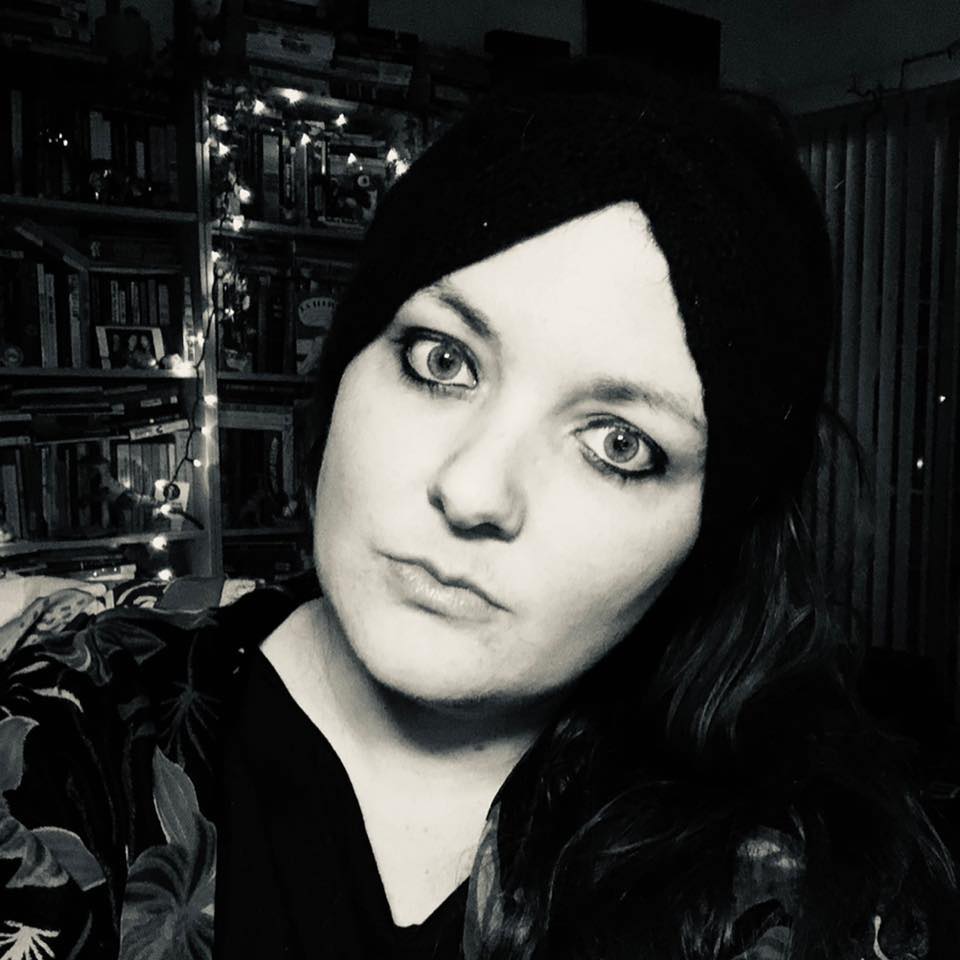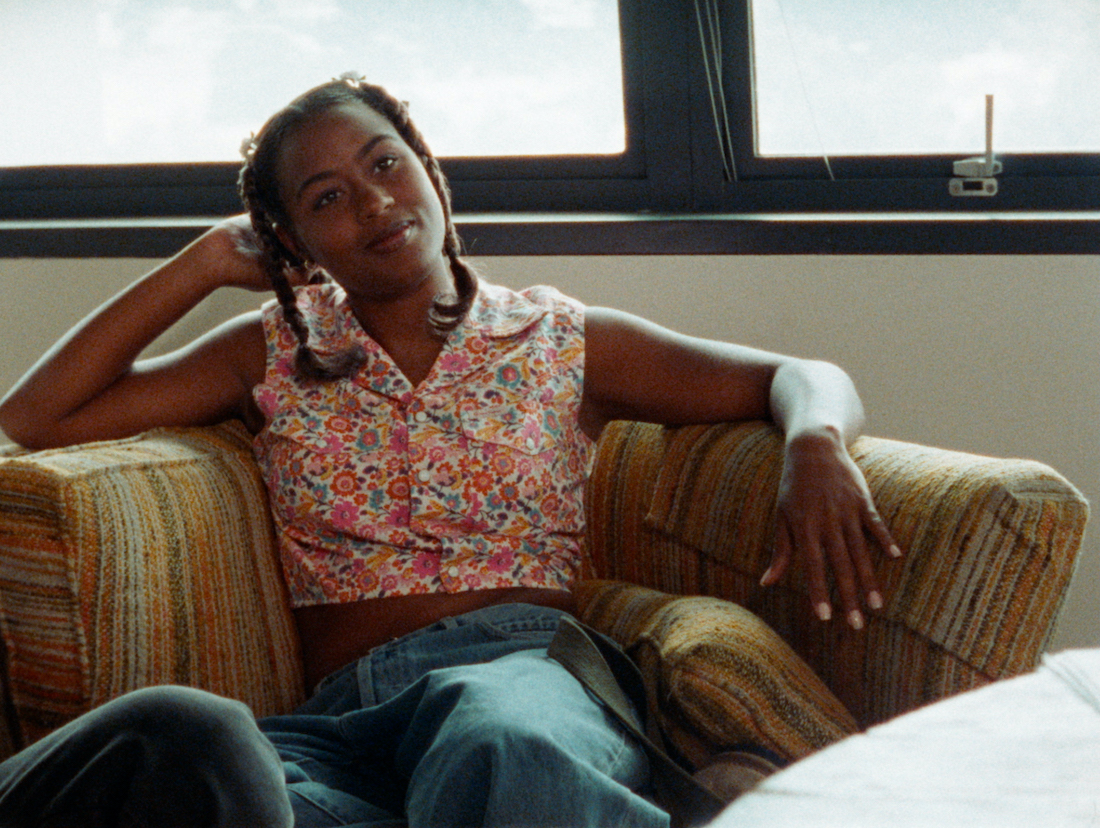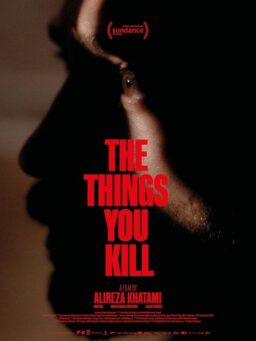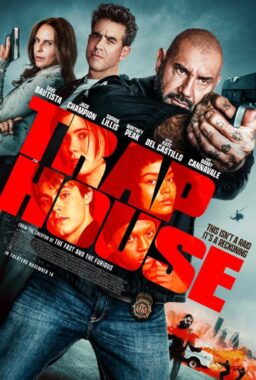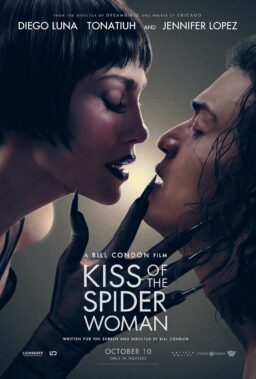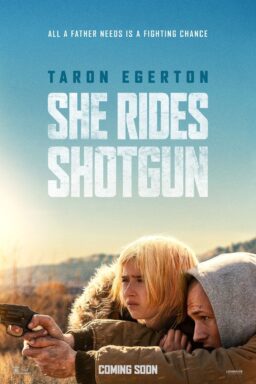The 1990s saw a boom in independent and DIY filmmaking, launching the careers of countless filmmakers. Yet, for many Black women directors, this bubble often burst after their debut films were released, leaving many directors like Ayoka Chenzira, Lesley Harris, Zeinabu irene Davis, and Cauleen Smith, with only one feature film to their name. Thankfully in the last few years, many of these films have been restored and re-released, and the legacy of these singular filmmakers reevaluated within the lens of the systematic racism and misogynoir that pushed them out of Hollywood.
Director and artist Cauleen Smith’s feature “Drylongso” is the latest of these movies to be brought back into circulation thanks to a new 4K restoration by Janus Films. Shot on location in Oakland in 16mm, Smith’s film blends genres, telling a buddy story, a romance, and a murder mystery all at once. As many Black men in the community die around her, art student Pica (Toby Smith) begins preserving their image via Polaroids as “evidence of their existence.” She also begins a romance with another artist and activist named Malik (Will Power) and a friendship with a woman named Tobi (April Barnett), trying to escape an abusive relationship. As the serial killer stalking the community goes unsolved by the police, Pica turns to her creative spirit and the strength of her friendships to take control of her own fate.
After premiering “Drylongso” at the 1999 Sundance Film Festival and winning the Someone To Watch award at the Independent Spirit Awards, Smith spent five years in Hollywood working, shadowing creators, and writing screenplays on spec. Frustrated by the lack of opportunities open to her in Hollywood, she turned to teaching, first at UT Austin and now at CalArts. In the last few decades, her art has moved closer to the sculpture art made by Pica in her debut. Her mixed-media banners were featured as part of the 2017 Whitney Biennial. She’s also made over 40 experimental short films incorporating her work in Afrofuturism and community activism. These films, along with her other immersive multimedia exhibits, have been presented in museums across the country.
For this month’s Female Filmmakers in Focus column, RogerEbert.com spoke to Smith over the phone about the making of her trailblazing independent film, working with the community of Oakland, and the many ways in which Black women’s craft is often overlooked in the arts.

Was the title of your film inspired at all by the book of the same name from the early ’80s?
Yes, by John Langston Gwaltney. In that book, he is basically like a cultural anthropologist. He interviews working-class Black people, and a lot of them refer to themselves as “drylongso.” They don’t quite understand why he wants to interview them. They were like, “I’m just drylongso,” which means really ordinary, everyday people. I was really intrigued by that term, and then I noticed it popping up in blues songs and other places. It’s more typically used in the South and the Caribbean, so being from the West Coast, I had never heard it before. It seemed like a perfect title for the type of people that I wanted to put in my film.
How did you first develop these characters and the story?
It was definitely something I was working on at first as a short film. All of the Polaroids that you see in the film were Polaroids that I was taking over the course of a couple of years, knowing that I needed these props for this film, or at the time maybe it was going to be an art installation. In the process of taking the photographs and constantly asking people,” Hey, can I take your picture?” I would think, “Oh, this is an interesting character.”
I started thinking of it as a short film. I started really using the conversations I was having with the people in the photographs to lay the groundwork for the story. A lot of the photographs were taken in the Bay Area, but I went down to UCLA to go to grad school, and that’s where I really kicked in gear, finishing a script and putting it through its paces with the stuff I was learning in grad school in terms of how to like break down a production.
In terms of the genre mixing in the film, at the time, I was working at this news transcription service where I transcribed the news at night while going to school during the day. Every week there was a story about a dead Black girl somewhere in South Central LA who was unidentified. Sometimes they would even show their manicure to see if anyone knew the girl by identifying the manicure. So I’m transcribing the news, and these stories are popping up every week, but maybe on a different network and not the same reporter. It didn’t seem like anybody was picking up on the fact that this just keeps happening. And then the same reporter is not tracking the story. And I’m like, “Look, there’s a serial killer.” I’m telling all my friends in film school there is a serial killer in LA killing Black girls. And everyone was like, if that was happening, they would know about it.
And then it turned out to be who they called The Grim Sleeper, right?
Yeah. Later they called him The Grim Sleeper. At the time, that kind of predatory shadow was very much in my psyche because I had to ride the bus at night. So that became part of the story. I know a lot of people talk about the film, and I’m not trying to be defensive, but they think that element is weird, is not appropriate for the genre. But it was actually a really mundane part of life. Like, oh my god, there’s a serial killer here.
I thought the way the serial killer plot plays out mostly in these background news reports was really interesting, especially the way it’s revealed that they’re alternating between killing women and killing men. That metaphor is really intriguing because the film obviously talks about the epidemic of Black men dying at the time, but the film is also very clearly aware that it’s a little of both. Could you talk about how you built that into the story?
I think we wanted to have a relationship between that violence, the shadow, and the actual narrative of the story. And that’s when it stopped being my story and became the story of Pica (Toby Smith). So the serial killer in the film is an equal-opportunity neighborhood predator. There’s not a lot of conversation about how those people exist. Lots of people like to toss around ideas around Black-on-Black crime, etc., but no one wants to talk about the predators in their own community, regardless of what that community is. So that character became the receptacle for that entire kind of refusal to acknowledge that there are people who prey on really vulnerable people, and we don’t want to talk about that because there are other things that are more sensational that are put in the forefront.
Yeah, like later, there’s a newscast where they report that the police think the killer is a low-priority crime, even though there are so many dead people.
Right? I mean, now there’s a term that’s been revealed in the LAPD, that they used to use the term NHI or “no humans involved,” and that was used for crimes that involved Black people as victims. So now we know that was institutionalized at that time. It was a feeling that, for me, that character was the representative of this general kind of violent indifference towards everyday life.

I also thought Tobi (April Barnett) was compelling in that you showed two prongs with her character. You really showcase the day-to-day violence of intimate partner abuse and what she’s going through just trying to break up with this man who is obviously very unhinged. But she also finds freedom in dressing as a man, even at a time when so many Black men are dying.
That position that she’s in is more common than we like to admit. And that was the point. No one goes around saying, “Hey, I went home last night, and my husband punched me in the face.” It’s not not watercooler talk. She’s just trying to make herself feel safe, basically. In the ’90s baggy clothes and hoodies were a really useful tool for everyone to become incognito, to become very difficult to discern or see. That kind of streetwear was then considered really threatening because it made it really hard for cops to isolate and single out people. We all became one mass of like a covert presence that would appear to be really menacing to the mainstream.
Now of course, that’s common, but at the time, it was a way to hide. That was a huge part of what that fashion was about. Not only hiding your face but hiding whatever you needed to carry around or whatever business you needed to handle or whatever goods or valuables you might have. It looks weird now, but at the time, it would be very common to throw on a hoodie and really baggy pants and move around if you don’t want to be sexually harassed or isolated in any way.
The film is a bit like a time capsule in that much of what you incorporate feels very of its time yet still hits themes that resonate today. Girls are still dealing with intimate partner abuse. They’re still dealing with being harassed on the street. It’s fascinating to see how that armor gets built, depending on the time. And the fashion in the film itself is, I think, really beautiful. I love Pica’s outfits. I love the shirts that Malik makes. It really took me back to the ’90s and those airbrush shirts. Were those made specifically for the film? How did you incorporate all that fashion into the film?
The artist (Keith Williams) is also in the film. He’s the really tall man with long dreads in the trio out of the blue jeans. He’s the artist who made those T-shirts and was actually really successful with them. I believe he had a line of clothing at JCPenney for a period of time. He was a member of the Oakland cultural community. He was really generous and agreed to be in the film. We shot some scenes in his loft. This is a film that was very much made by the Oakland Community. 100%. And he’s a great example of that.
I loved the scene in Marcus Books, which is still in Oakland. This really is such an Oakland story. What was the location scouting like?
We have a really great line producer named Christine Gant, who was born in Oakland. While I was down in LA, going to school and finishing up the script, Christine was driving around West Oakland, looking at abandoned houses and trying to figure out where we could shoot this thing. It was very clear that the house that Pica lives in was one of the main anchors of the entire film. Everything would revolve around that geography. So it needs to be not just a really great house, but on a great block.
I lived in that neighborhood before I went down to grad school at UCLA, so I knew the neighborhood. Historically, it is really venerable and has this great history of activism, even though it was really struggling at that time because of willful disinvestment by the city powers. That neighborhood wasn’t getting a lot of help and was being blamed for its own vulnerabilities. The people who were there at that time, were really struggling to hang on. There were a lot of empty houses.
Christine drove around and just took pictures of them. We found the ones that we liked and she tracked down owners. One of the owners was just amazing. The family wasn’t doing anything with the house and didn’t know what they wanted to do with it. So they told us if we bought a water heater and did some repairs, we could use it for the summer. We asked if we could paint it and they said yeah. The neighbors who really hated that paint color.
That pink was beautiful. It really pops.
By the end of the summer, they were like you don’t have to paint it back; we love it. Again, this is such a central story of how this film was made and how the title of the film actually encompasses not just the fictional characters, but the actual community that made it possible for us to shoot it. From the owners of that home on Magnolia Street to the whole block letting us plug in lights in the middle of the night into their house while they’re asleep. I lived and slept in that house every night by myself for three weeks. There were barely any locks on the doors and not one thing happened to me and no equipment was stolen. When that kind of thing is occurring in a neighborhood, it’s because you’re protected. Because there’s an agreement within the community that no one’s gonna really mess with you. That the community made in terms of protecting what we were trying to do. I’ve never been so grateful. I’ve never really forgotten that feeling of how when people were driving by slowly, it wasn’t because they’re going to shoot us; they were checking on their kids because their kids were hanging out on our set.
You can feel how realistic the community depiction was with the actors’ interactions with the people on the street. Were those extras or just people on the street?
So many were the people we met. In fact, one of the stars to me, like a star of the film, is the really belligerent woman (Tammy Washington).
Yeah, she felt very Bay Area to me.
Oh my gosh, 100%. She lived in the neighborhood. People would drive up while we were shooting and ask what we were doing and if we were shooting a music video, then tell us they had acting experience. So she and her mother came to visit the set one day and told us they did community theater. They were really just sharing that they had skills to offer up. And I was like, “Really, because you guys are amazing. Do you want to be in a scene?” She took a few lines and turned that character into somebody. We just kept calling her back, like, “Hey, can you come to the BART station? Because it’ll be so cool if you could be in the scene.” At the end, when she does that streak across the empty lot and chases everyone away, that was a conversation that we had where I was like, “It’s time for this party to end, and I need you to get these people off the spot,” and she just did it.
I really felt that character. I used to live on the Oakland/Berkeley border and this film definitely felt like the Oakland I knew.
Right. It seems like this kind adorable trickster, like really belligerent but absolutely harmless. There were just so many people who popped up like that. One of our grips was a young man named Carlos. His father would drop him off to crew, and he would work with my head gaffer Kurt (Nagle-Taylor). He trained him how to cut gels to rig lights. He was a central crew member. He was 15 at the time. Now Carlos is in the union and just doing great. It was just really beautiful. It was completely neighborhood driven. We had very little money, so everything had to be what people were willing to give us and contribute.

There was a moment early in the film where Malik and Pica are hanging out, and he’s reading a very specific deck of tarot cards, reading her future. How did that scene come to be?
That particular deck was really exciting because it was a deck that was moving from tarot into Santeria. So it was all the Orisha, and the cups and swords were turned into cowrie shells. When I saw the deck I knew it was the right deck. I’m not even really into tarot, but in the narrative, I needed a metaphor for the shift between the deck of Polaroid photos that Pica lays out like divination and the tarot cards which she also lays out like divination. She’s constantly confronting her fate, or the fate of people that she loves, either through the Polaroids or through the tarot cards, and the fact that I could find a deck of cards that were a representative of African Orishas instead of European princes or elven or whatever, was really a gift. I still have that deck somewhere.
Did you find that locally in Oakland?
I think I bought it at Marcus Books to be honest.
I wanted to ask you about the reputation of the film. When it was released, there were quite a few films from Black women that didn’t necessarily go under the radar, but maybe were misinterpreted and neglected. Last year, I spoke to Ayoka Chenzira, whose film “Alma’s Rainbow” was at Sundance and then disappeared.
They’re ahead of their time.
Exactly. And now they’re being looked at now as the masterworks that they were. I’d love to hear your thoughts on having lived through this era with another one of these films that was sort of treated not the way it should have been.
I remember seeing Ayoka’s film in the theaters with Q&A, and I remember being completely gobstruck by it. That sort of thing kept happening then, and I’m kind of happy that it seems to happen less now, is that the conversations around these films were very poor. It didn’t matter what the director did or offered in terms of trying to add complexity. You couldn’t get people to talk about not just the narrative aspects, but the craft aspects of the film. All of the aesthetic decisions that go into making a film that we were doing in our film, people assumed it was somehow accidental, or that it was just all there already. That we didn’t make the image ourselves.
I worked so hard on the film, aesthetically, to make every frame, just a full picture of information. And at the time, it made me wonder if it was all not visible? What exactly is going on here that all people want to talk about is the extermination of Black men, when in fact this is the film about two girls who survive and thrive and have a pretty interesting life and goals for themselves? I’m not sure that much has changed in the ways in which the work and labor of Black women in the arts and film is almost reflexively diminished. You can look at how “The Woman King” was almost totally ignored, directorially, this past year.
And it absolutely was one of the most intricately directed films of the year, and it wasn’t treated as such.
Exactly. Someone just recently wrote an article about Beyonce and how there’s no argument that she’s like one of the greatest pop stars who ever lived. I’m not even a fan, but I cannot hate on a sister, because she is brilliant at what she does. It’s just not an argument, but the Grammys just can’t bring themselves to give her a Best Album. They can’t bring themselves to do it.
I don’t know how you look at “Lemonade” and everything she did with that, from the music and the lyrics and storytelling to the visuals, and not say it was the best album of the year. That’s wild.
It’s embarrassing. “Drylongso” was made with scotch tape and glue and spit, and love. All on the edges, it’s very frayed. I was very aware of that. But a lot of other independent films were, too. So honestly, I was really surprised by how unwilling people were to even just acknowledge the craft that did exist in it. I don’t know why I was surprised because like you said, Ayoka was ignored. My friend Zeinabu irene Davis made an amazing film called “Compensation.”

I love that film so much. That is one of those films, you watch it and you’re like, how is this not heralded as a masterpiece from the last 30 years?
Precisely. And that’s what was going on all around me at the time. We were just, you know, really clear about the system and its shortcomings. I would like to say that it’s changed—and it has changed a little bit. But when Gina Prince-Bythewood doesn’t get even a nod or a nomination for her work, then we know that we’re pretty much back in the same situation.
Yeah. And it feels, maybe there’s hope because there’s more conversation around it now. But at the same time, it’s like there have been conversations every decade.
Oh, yeah, it’s cyclical. And also Lesley Harris with “Just Another Girl on the I.R.T.” and before that Kathleen Collins’ “Losing Ground.” These are the films that told me that this was possible. My hope was that there would have been more infrastructure within the Black community to critically engage new films. But that wasn’t possible at that time either. Really just making the film was something that I knew I could do because of these other really, really brilliant artists that had done it before me.
With so many of these films coming back available – obviously now your film has this beautiful restoration playing in theaters, last year “Alma’s Rainbow” was restored and released, there’s a new 4K restoration and Blu-ray of “Just Another Girl on the I.R.T.”—do you think that perhaps by having these films more widely available, younger women will be inspired to keep fighting the fight and attempt to work within this system?
I think it really helps to have the films available. I know for myself, when all the LA Rebellion films were finally released, I literally wept. Because I thought, what would I have known or what would I have been able to think about if I’ve seen these films when I needed to? It’s very much about having access to this catalog of aesthetic decisions that are so important to any artist.
I don’t want to have to look at a Scorsese movie and ignore all of the scenes where he’s calling someone the N-word just to learn how to build a shot in a sequence. I don’t want to have to fuel myself that way. There’s a lot to be learned from him, and there’s also a lot that maybe is of no use to someone like me. I think that the larger the reserve of films by filmmakers, who think of Black people as people and not as plots or in just plot terms or like disposable flesh, which is basically the standard in Hollywood, then I think the better it is for young filmmakers to understand how to render our lives and our stories.
The 4K restoration of “Drylongso” opens at the Film at Lincoln Center on March 17th, with a national rollout to follow.
